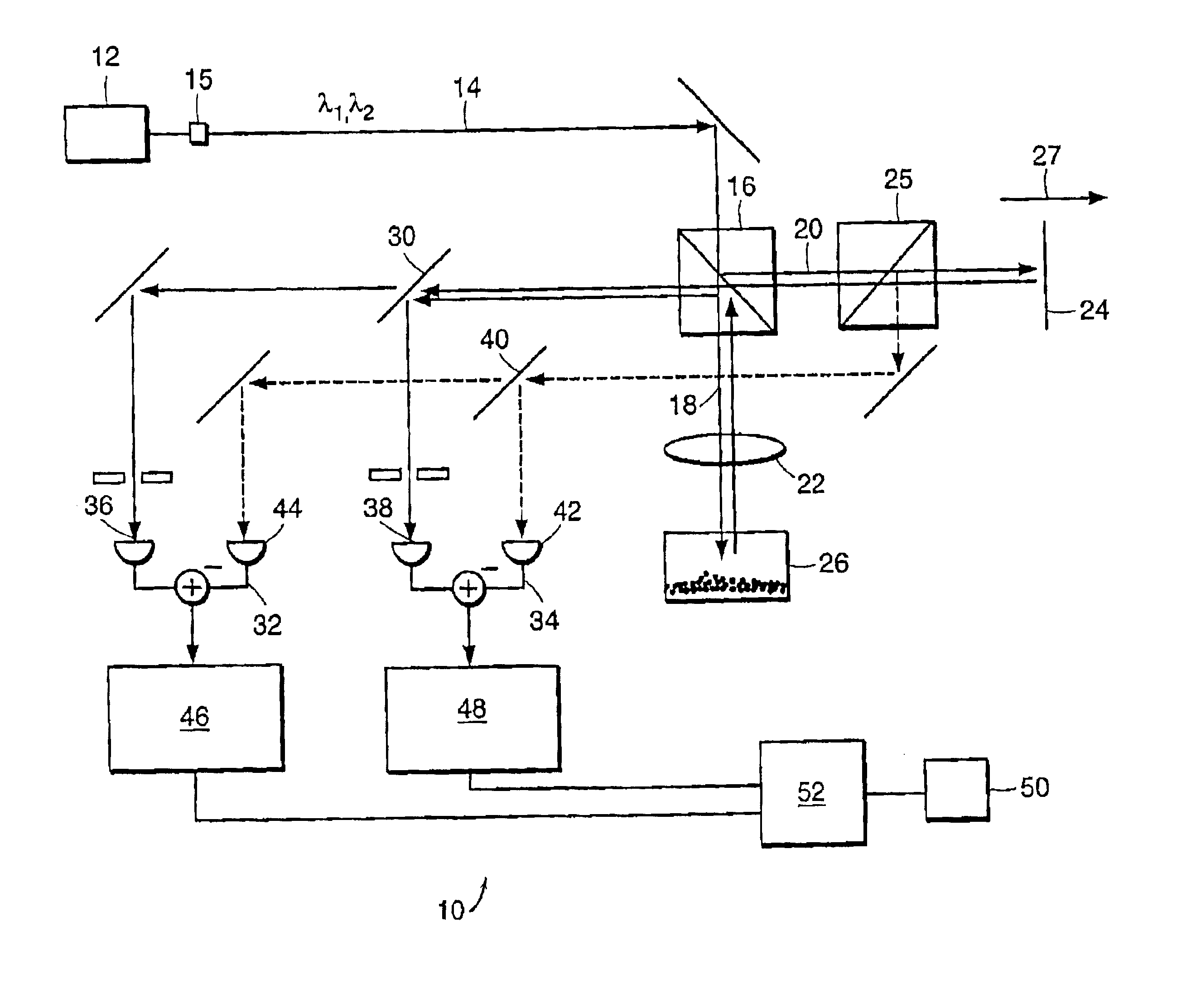Methods and systems using field-based light scattering spectroscopy
a field-based light scattering and spectroscopy technology, applied in the field of optical imaging techniques, can solve the problems of based lss only providing a two-dimensional image, and affecting the quality of tissue spectroscopic information, so as to achieve the effect of preventing the interference of internal sample reflections
- Summary
- Abstract
- Description
- Claims
- Application Information
AI Technical Summary
Benefits of technology
Problems solved by technology
Method used
Image
Examples
Embodiment Construction
Referring to FIG. 1, a preferred embodiment of a field based LSS system 10 is illustrated, including a Michelson interferometer with two low-coherence light sources. In this particular embodiment, a Coherent MIRA Ti:sapphire laser 12 operating in femtosecond mode (150 fs) produces 800 nm light. The measured coherence length is about 30 μm. A portion of this light is handled by converter 15 such that it is split off and up-converted to 400 nm by means of a CSK Optronics LBO second harmonic generation crystal. Note that two or more separate light sources can be used to provide the two or more wavelengths used for particular measurements. The converted light is then recombined with the original beam. There is preferably substantial overlap (i.e., greater than 50% and preferably greater than 80%) between the two wavelength components. Reduced overlap will increase the scan time to illuminate a given surface are or volume. The combined beam 14 is then divided by a beam-splitter 16 into a...
PUM
| Property | Measurement | Unit |
|---|---|---|
| sizes | aaaaa | aaaaa |
| coherence length | aaaaa | aaaaa |
| coherence length | aaaaa | aaaaa |
Abstract
Description
Claims
Application Information
 Login to View More
Login to View More - R&D
- Intellectual Property
- Life Sciences
- Materials
- Tech Scout
- Unparalleled Data Quality
- Higher Quality Content
- 60% Fewer Hallucinations
Browse by: Latest US Patents, China's latest patents, Technical Efficacy Thesaurus, Application Domain, Technology Topic, Popular Technical Reports.
© 2025 PatSnap. All rights reserved.Legal|Privacy policy|Modern Slavery Act Transparency Statement|Sitemap|About US| Contact US: help@patsnap.com



